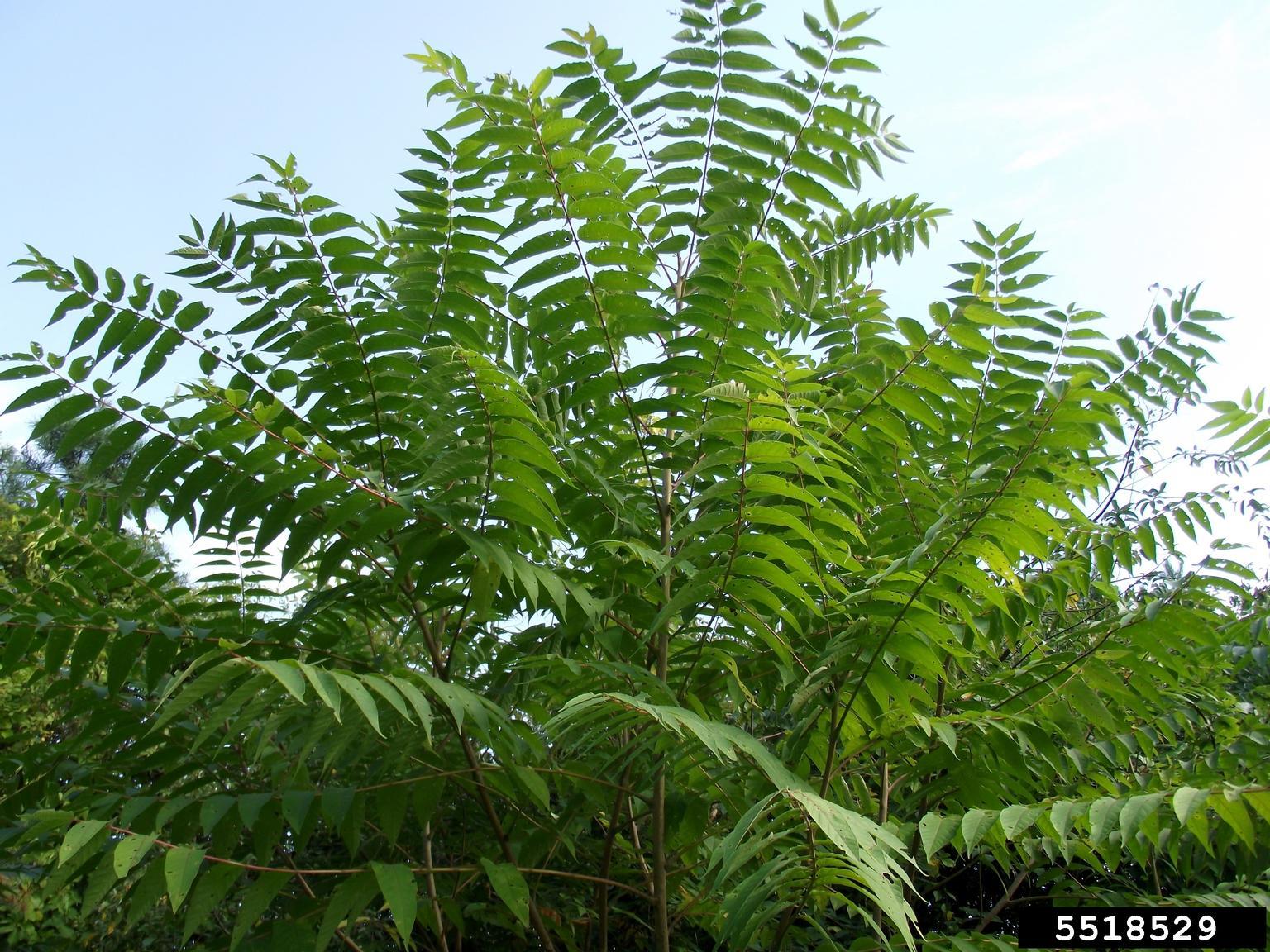About tree-of-heaven (Ailanthus altissima)
Life cycle and background
Invasive deciduous tree. The preferred host plant of invasive spotted lanternfly.
Growth habit
Fast growing and invasive; leaf large, 1 to 4 ft. long, compound with 11 - 25 leaflets; leaflets have a smooth margin and 1-2 teeth near the base with a pair of small glandular structures; entire plant has an unpleasant odor but particularly the leaves if they are crushed. Tree-of-Heaven looks similar to native sumac and black walnut. The Maryland Biodiversity Project has photos showing various features of these plants.

Reproduction
Seeds; male and female flowers on separate plants, followed by papery samaras; large leaf scars and smooth bark; resprouts from roots if cut

Conditions that favor growth
Escaped cultivation and can be found in any location, even under harsh conditions
Controlling tree-of-heaven
Simply cutting down the top portion of tree-of-heaven will not control it. It will re-grow from any roots that are left alive. The roots must be killed with a systemic herbicide, glyphosate or triclopyr. The best time to kill the root system is in late summer to fall - July until the onset of fall color. This is when trees draw carbohydrates down into their root system to support winter survival. An herbicide applied during this period will be taken down into the roots as well.
Follow the Tree-of-Heaven Control Methods and Calendar from Penn State Extension for procedures and timing. For residential gardeners, the "hack and squirt" and "foliar" treatments are the easiest options that are recommended.
